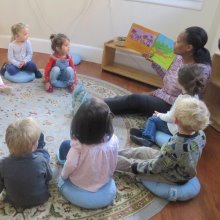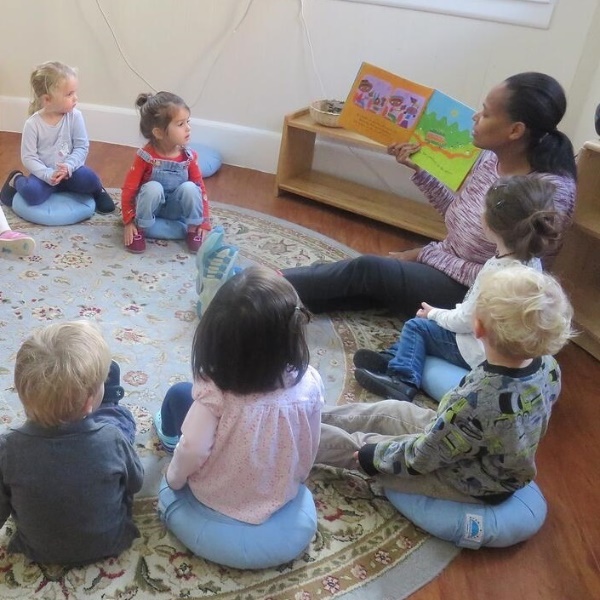
The Montessori classroom is a meticulously prepared environment, developed to maximize learning and growth in students. Maria Montessori pioneered the idea that an environment can be designed specifically to facilitate independent learning in children. She based this concept on her own careful observations, and developed a framework of six core principles to guide the creation of a student-centered classroom.
The success of a Montessori classroom has much to do with the preparation of the environment; teachers take time and careful attention to arrange classrooms that allow for independent movement and work; freedom of choice in work activities; and comforting lighting and soundscapes.
SIX PRINCIPLES OF THE PREPARED ENVIRONMENT
Freedom - The prepared environment allows for freedom of movement; freedom of choice during independent work blocks; and freedom to either interact socially, or take time to yourself. From the earliest levels of Montessori education, students are encouraged to develop agency, and to seek out opportunities and resources. This freedom helps students develop positive relationships with "work," which leads to motivated, independent learners.
Structure and Order - It may seem strange to follow "Freedom" with "Structure and Order," but in practice, they complement each other perfectly. Montessori classrooms can sometimes seem hectic or unstructured, but this is only because the students and teachers have taken time to establish the routine and structure needed for students to work independently. This structure is very important to the development of a confident, reasonable learner. As the child internalizes the structure of the classroom around her, she realizes the rational, systematic outcomes of the natural world, as well. The student is able to make assumptions and rationalizations, and determine the truth and value of these things by navigating a structured environment. A chaotic environment can have a detrimental effect to developing reasoning skills and confidence, as these opportunities to develop detailed perceptions are fewer and more fragmented.
Beauty - Beauty is a hallmark of the Montessori prepared environment because it creates a sense of harmony, order, and comfort for students and teachers. Beauty is, of course, in the eye of the beholder, and Montessori classrooms strive to deliver a calming beauty that can be enjoyed fully by the students of that classroom. Natural lighting and oxygen-producing plants are parts of many classrooms, which speaks to the next principle of the prepared environment as well. Warm lighting, pastel colors, and soft materials are often seen in Montessori classrooms, creating a feeling of being at home, or at least, being in a comforting environment.
Nature and Reality - Being able to interact with the world around you is a hallmark of Montessori education from the earliest levels. Students are encouraged to interact with the natural environment outside of the classroom, to experience and interpret natural phenomena. Within the classroom, natural materials are used as much as possible. Dexterity work could involve grains of sand or kernels of corn; practical life work may involve preparing a snack with real kitchen utensils. Both natural and real materials are used so that students can learn the relationships between these objects, and have confidence using them independently as they grow. It's common to see children interacting with actual glass vases for their flower arranging work, or manipulating real fabrics and materials on the dressing frame or with the locking activity board. Students learn to utilize real fabric fasteners like zippers, buttons, and velcro; they also work with real metal locks and latches to learn the basics of mechanics and increase dexterity. It's important that children learn how these materials work, for their own growth as well as safety.
Social Environment - Beyond the physical environment and materials within the classroom, the classroom space also acts as a social environment for the students. Students have the ability and freedom to interact with each other through work, rest, and play; the social and emotional frameworks of a Montessori education encourage students to approach each other with empathy, and to work constructively through disagreements or differences. As children grow, they become more socially aware, and their interactions become more meaningful. This is further encouraged by the multi-age classroom, where older students can model more advanced behaviors for their younger counterparts.
Intellectual Environment - The intellectual environment is the culmination of the six principles of the prepared environment; by creating a space in which the Montessori curriculum can flourish, students will develop their intellect as well as their personalities. This environment is full of materials and activities specific to each piece of the Montessori curriculum. Students understand that this is a place for learning, and they are comfortable developing their foundational skills (order, coordination, concentration, and independence) within this environment.
See more about the Montessori Elementary experience in this video, featuring Kingsley, from the American Montessori Society!







.jpg&command_2=resize&height_2=85)








.jpg&command_2=resize&height_2=85)
.jpg&command_2=resize&height_2=85)




